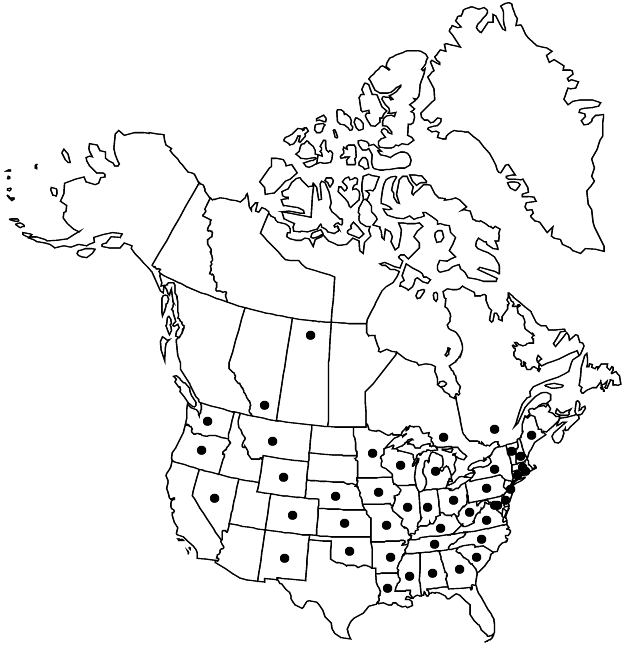Difference between revisions of "Polygonum erectum"
Sp. Pl. 1: 363. 1753.
FNA>Volume Importer |
FNA>Volume Importer |
(No difference)
| |
Revision as of 22:32, 16 December 2019
Plants light green or yellowish, heterophyllous. Stems erect to ascending, sparingly branched in distal 1/2, not wiry, 15–75 cm. Leaves: ocrea 7–12 mm, proximal part cylindric, distal part usually persistent, with strong veins, margins entire or lacerate, silvery, later disintegrating into ± persistent brown fibers; petiole 1–5 mm; blade light green or yellowish, elliptic to obovate, 30–60(–80) × (8–)10–25 mm, margins flat, apex obtuse; stem leaves 1.5–3.5(–4) times longer than branch leaves; distal leaves overtopping flowers in distal part of inflorescence. Inflorescences axillary; cymes in axils of most leaves and toward tips of stems and branchs, 1–5-flowered. Pedicels mostly exserted from ocreae, 3–7 mm. Flowers closed; perianth 2.8–3.8(–4.2) mm; tube 20–37% of perianth length; tepals overlapping, green with yellowish, rarely whitish green, margins, sepaloid, not keeled, oblong to obovate, cucullate; midveins branched, moderately to heavily thickened; stamens 7–8. Achenes enclosed in perianth, brown to tan, ovate, 3-gonous, 2.3–3.5 mm, faces subequal, ± concave, apex not beaked, edges concave, dull, striate-tubercled; late-season achenes uncommon, 4–5 mm.
Phenology: Flowering May–Oct.
Habitat: Dry, waste ground
Elevation: 10-300 m
Distribution

Alta., Ont., Que., Sask., Ala., Ark., Colo., Conn., Del., D.C., Ga., Ill., Ind., Iowa, Kans., Ky., La., Maine, Md., Mass., Mich., Minn., Miss., Mo., Mont., Nebr., Nev., N.H., N.J., N.Mex., N.Y., N.C., Ohio, Okla., Oreg., Pa., R.I., S.C., Tenn., Vt., Va., Wash., W.Va., Wis., Wyo.
Discussion
Polygonum erectum was cultivated in the midwest by Native Americans for its starchy seeds (C. M. Scarry 1993). It was formerly confused with P. achoreum (T. R. Mertens and P. H. Raven 1965).
Selected References
None.